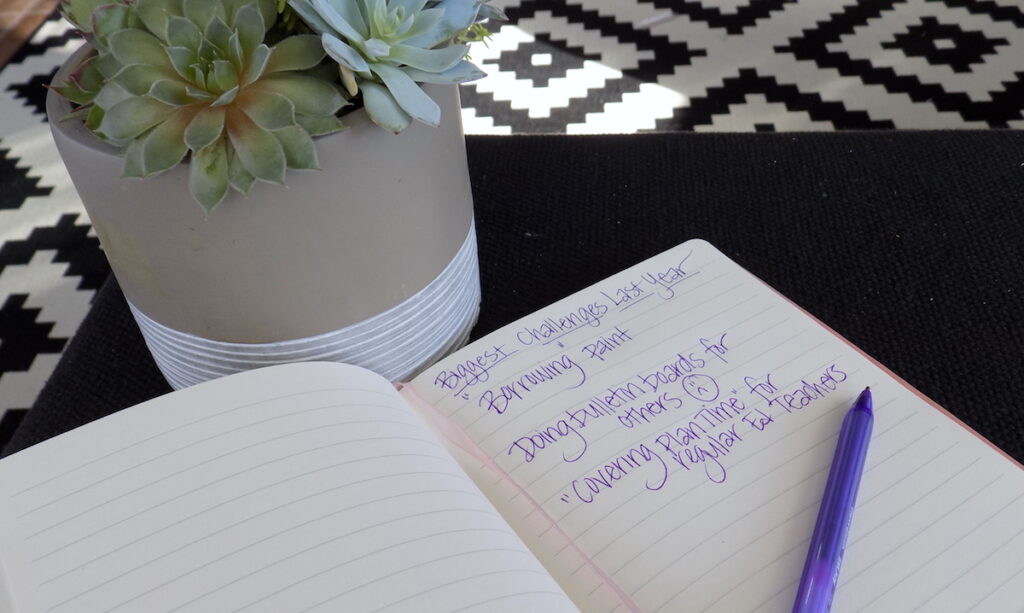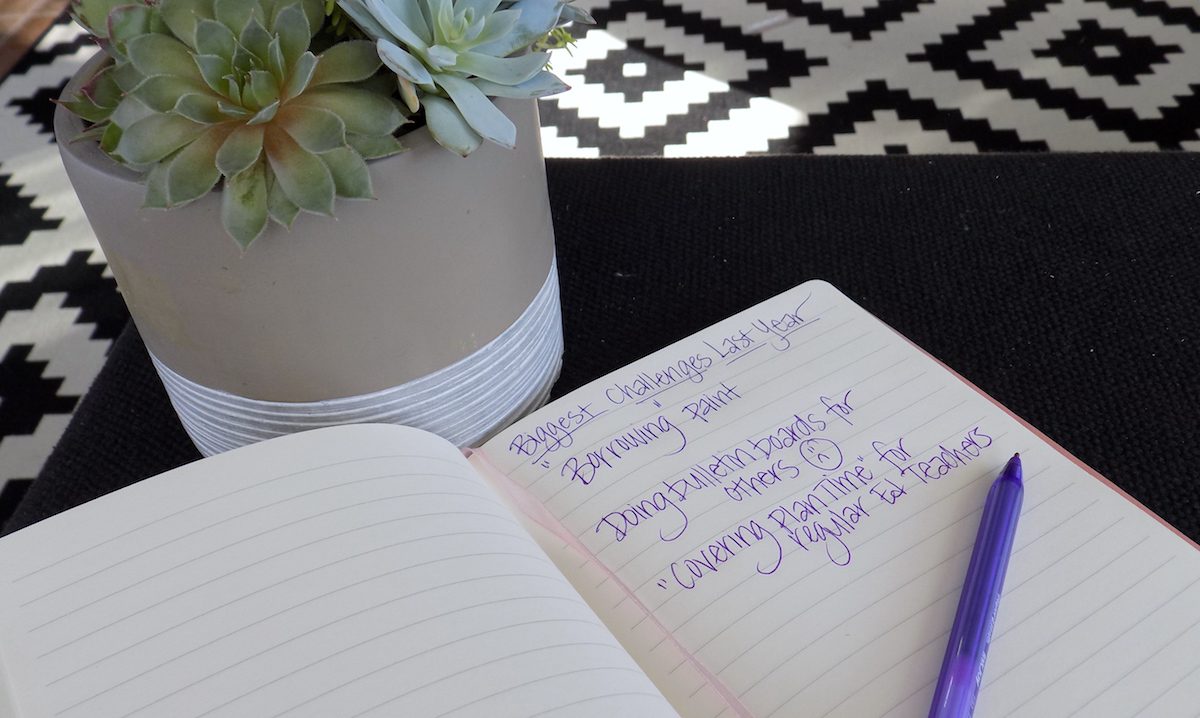While the term “art teacher” describes a profession, I would argue it also describes a way of life. When you proclaim you teach art, you’re not only announcing your line of work but your way of thinking as well.
As art teachers, we believe personal voice is valuable. We believe the ability to express that voice is a central part of what it means to be human.
We joined the ranks of public and private educators because we wanted to live these beliefs despite low wages and a pervasive climate of people second-guessing the importance of what we do.
In short, we chose a profession based on personal passion, despite the obstacles, and this is precisely why “art teacher disrespect” cuts so deeply.
Art teacher disrespect comes in many forms, from outrageous requests of our time to passive-aggressive comments which belittle what we do and why we do it. And although we invest time into advocating for our students and our programs, we don’t often extend the same courtesy to ourselves. Let’s change that.
This fall, I encourage you to expand your advocacy efforts to yourself, for the betterment of your own work environment and the art teaching profession at large.

Of course, this is easier said than done. Standing up for yourself, especially in a work environment, is no easy feat. But, as Dr. Phil notes, “Relationships are mutually defined… You have to teach others how you want to be treated.”
This idea can be tough to wrap your brain around because it means you play a part in shaping the behavior of others. While you are obviously not responsible for something a colleague initially says or does, you are responsible for how your response directly informs all future interactions.
Avoiding confrontation by not addressing unacceptable behavior might feel easier or more professional…but it isn’t the answer.
In the long run, acquiescence sends a terrible message. If you are silent after being treated disrespectfully, you are essentially saying you agree with how you have been treated and you’re fine with future interactions taking the same form. “Oh yes,” your silence is saying, “I’d love to blindly do all the things you ask of me regardless of their worth or merit!”
On the flip side, responding in an overly aggressive or emotional manner to a situation can lower your esteem in a colleague’s eyes. It isn’t a good solution either.
So what can you do? Try clearly defining your relationships with a policy document.
Instead of waiting until a negative interaction occurs, redefine your relationships at the beginning of the year. Just as you set expectations for your students, set clearly defined expectations for your professional relationships as well. One effective way to do this is to create and implement a staff policy document. Here’s what to do.
5 Steps to Create an Effective Staff Policy Document
It would be great if we could provide a “one-size-fits-all” document you could simply download and hand out to your staff. But, in the same way workplace relationships tend to be nuanced and complicated, so are the strategies to fix them. The following steps will allow you to hone in on your biggest issues and find solutions to help solve them.
1. Identify the 3 most challenging interpersonal aspects of your position.
I would suspect, for many of us, these would fall into the following four categories:
- Borrowing or taking supplies.
- Personal or school-related “art favors.”
- Expecting collaboration across subject matters.
- Belittling comments, unintentional or otherwise.

2. Decide what set of circumstances would make these current scenarios bearable for you.
Notice that I said “bearable,” not “ideal.” You may not be able to change your school climate in a single school year, but you can definitely nudge it in the right direction. Consider giving in a little, to get a lot in return.
Here are a few ways you could deal with the challenges from above:
- Create a shelf or cabinet where you will put extra supplies others can help themselves to without asking.
- Create a sign-up sheet where people can sign up for a limited number of school-related art favors. Black out the month of your art show, grading periods, and other times of the year you are busier.
- State you are open to exploring collaboration with other subjects if there is a direct tie to your own art curriculum.
3. Draft your policy document.
As you draft your policy document, keep your tone friendly and firm. You may want to explain the document like this, “This year, I want to clarify a few policies related to the program to make sure my time at school and our art supplies are being best allocated for our art students. I look forward to your continued support of the art program this year.”
From there, you can frame your new policies using positive language, providing a logical reason for each. For example, you might say, “You are welcome to borrow supplies from (insert location here), but the other supplies are specifically designated for the art program due to budget restrictions.”
Finally, keep the overall document brief. Consider adding a fun design element or bright color. We are all busy during the beginning of the year and teachers are more likely to read something eye-catching and concise.
4. Distribute your policy document to all stakeholders in an appropriate setting, as soon as school starts.
Often, an in-person delivery is the most successful. It’s always great to make personal connections. If you have a sympathetic administrator, request to be added to a staff meeting agenda. Then, you can share the purpose of the document and distribute copies right there.
Of course, if you don’t have time for either of those scenarios, you can always place a paper copy in everyone’s mailbox or email a PDF.
5. Throughout the year, follow through when expectations are not met.
Remember, we are teaching others how to treat us, and sometimes re-teaching will be necessary! Expect everyone to think they are the exception. So, when the first dissenter borrows a ream of drawing paper without asking, prepare to address it immediately.
Here are four steps to confronting a situation head on:
- Take time to remove yourself from the situation emotionally.
If you are feeling anger or resentment, you need to wait a few hours! - Go in with your policy paper.
It adds legitimacy to your conversation when you are able to point out when and where you articulated your expectations. - Name your emotions, offer an explanation, and suggest a common experience to diffuse the initial conflict.
You may say something like, “I am frustrated, but I don’t want this to come across as confrontational or angry. Last year, I experienced a number of situations that presented larger challenges to the art program. As a classroom teacher, I’m sure you’ve experienced circumstances like this.” - Reference that policy paper.
Continue with something like, “I created a policy regarding borrowing supplies so the whole staff could help me remedy these issues. I’d love to loan you that drawing paper, but my budget just can’t handle it. That’s why I’m only letting teachers borrow from (insert location here) this year. I know you will understand.”
After your “confrontation” expect your relationship with the offender to be a little uncomfortable…at first. No one likes to be called out on their own bad behavior. You are sending a new signal that you won’t accept anything less than respect for yourself and your program. Over time, this will become understood by all. Be sure you are simultaneously sending the signal that you still value and respect your colleagues, too. Don’t carry grudges, and remain collegial. After all, they are also our students as we teach them how to treat us.
How do you advocate for your program among other staff members?
What tips and tricks do you have for defending yourself and your program to other teachers?
Magazine articles and podcasts are opinions of professional education contributors and do not necessarily represent the position of the Art of Education University (AOEU) or its academic offerings. Contributors use terms in the way they are most often talked about in the scope of their educational experiences.





